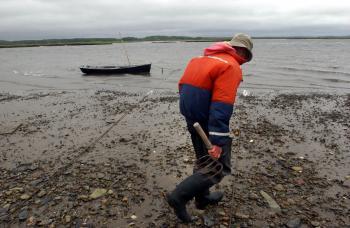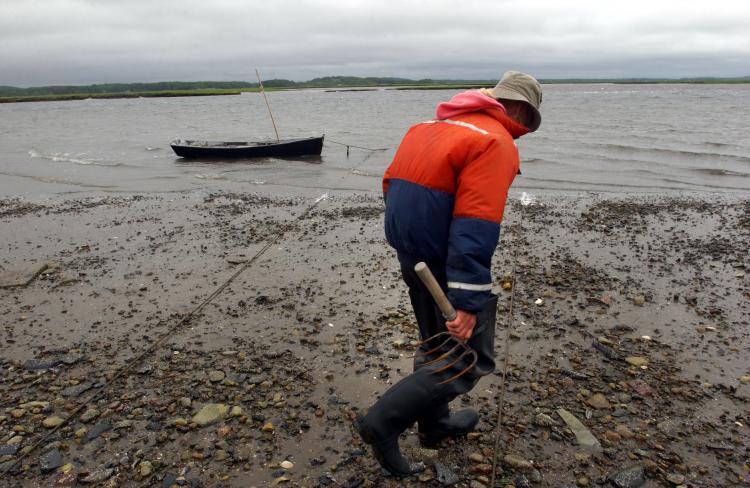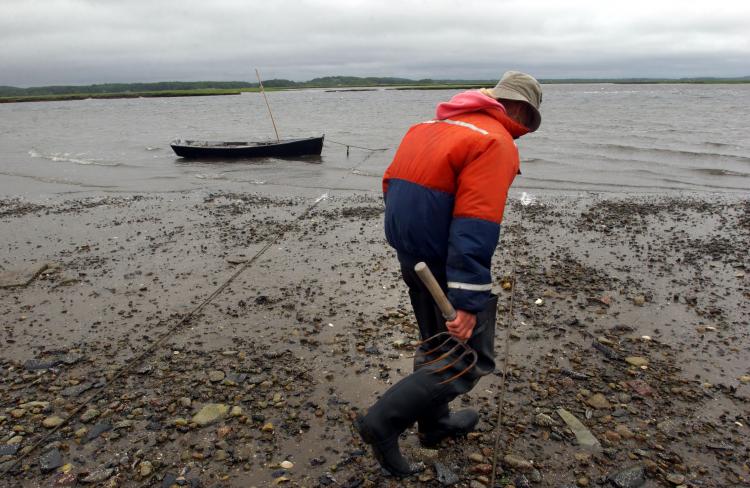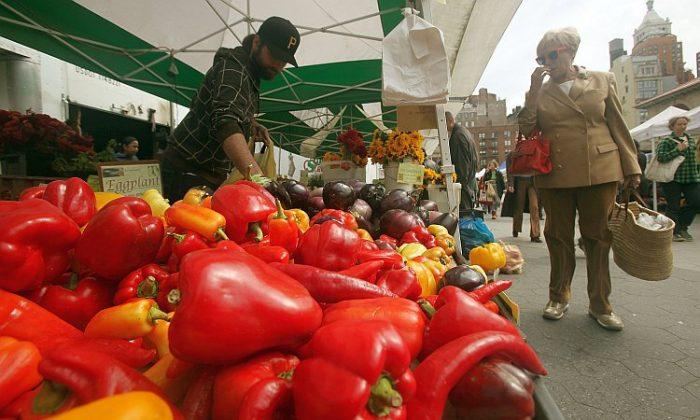Scientists have issued a less than favorable outlook for a “significant regional bloom” of the toxic algae Alexandrium fundyense, causing red tides in New England and threatening this season’s shell fish harvest. The warning came in a press release issued last week by the Woods Hole Oceanographic Institution (WHOI).
According to the release, “This year’s bloom could be similar to the major red tides of 2005 and 2008, according to WHOI biologist Don Anderson, principal investigator of the GOMTOX (Gulf of Main Toxicity) study.” According to the report the 2005 bloom caused an estimated $20 million loss to the Massachusetts shellfish industry alone.
The red tide causes no direct threat to humans, but it does affect filter feeding organisms like clams and oysters. This in turn makes their meat poisonous to humans and can lead to a condition called paralytic shellfish poisoning (PSP).
Although there is no danger to purchased shellfish that are closely monitored in the marketplace, it is important for recreational fisherman to closely monitor local state agencies such as the Massachusetts Division of Marine Fisheries before harvesting shellfish. According to the release, “Due to effective monitoring by state agencies, there have been no illnesses from legally harvested shellfish in recent years—despite some severe blooms during that time period. There have been, however, several severe poisonings of individuals who ignored closure signs.”
Joe Bowab, president of LobsterAnywhere.com is aware of the announcement. Based in Lowell Mass., LobsterAnwhere.com ships seafood as far as Hawaii. During the last red tide he said that his company was forced to purchase shellfish from Canada.
Bowab said that, “People that know clams know that the quality of clams in New England are the best in the world.” Given this, he said that a red tide will definitely drive up prices. Bowab said that those heaviest hit by the red tide will be restaurants, clam diggers, and small distributors in New England.
“Red tide is a chronic problem in the Gulf of Maine, and states have limited resources to handle it,” said Darcie Couture, director of Biotoxin Monitoring for the Maine Department of Marine Resources in a statement. “When we get this information about the potential severity of a red tide season, and the dynamics of the bloom once the season has started, it gives us an advantage in staging our resources during an otherwise overwhelming environmental and economic crisis.”
According to the release, “This year’s bloom could be similar to the major red tides of 2005 and 2008, according to WHOI biologist Don Anderson, principal investigator of the GOMTOX (Gulf of Main Toxicity) study.” According to the report the 2005 bloom caused an estimated $20 million loss to the Massachusetts shellfish industry alone.
The red tide causes no direct threat to humans, but it does affect filter feeding organisms like clams and oysters. This in turn makes their meat poisonous to humans and can lead to a condition called paralytic shellfish poisoning (PSP).
Although there is no danger to purchased shellfish that are closely monitored in the marketplace, it is important for recreational fisherman to closely monitor local state agencies such as the Massachusetts Division of Marine Fisheries before harvesting shellfish. According to the release, “Due to effective monitoring by state agencies, there have been no illnesses from legally harvested shellfish in recent years—despite some severe blooms during that time period. There have been, however, several severe poisonings of individuals who ignored closure signs.”
Joe Bowab, president of LobsterAnywhere.com is aware of the announcement. Based in Lowell Mass., LobsterAnwhere.com ships seafood as far as Hawaii. During the last red tide he said that his company was forced to purchase shellfish from Canada.
Bowab said that, “People that know clams know that the quality of clams in New England are the best in the world.” Given this, he said that a red tide will definitely drive up prices. Bowab said that those heaviest hit by the red tide will be restaurants, clam diggers, and small distributors in New England.
“Red tide is a chronic problem in the Gulf of Maine, and states have limited resources to handle it,” said Darcie Couture, director of Biotoxin Monitoring for the Maine Department of Marine Resources in a statement. “When we get this information about the potential severity of a red tide season, and the dynamics of the bloom once the season has started, it gives us an advantage in staging our resources during an otherwise overwhelming environmental and economic crisis.”






